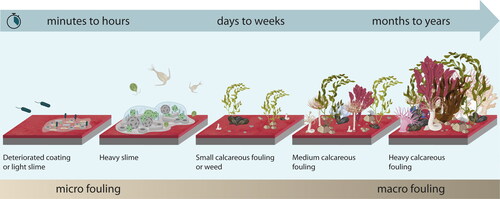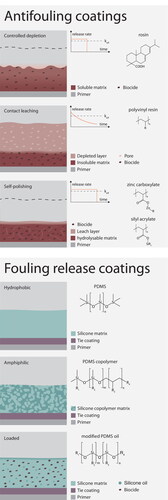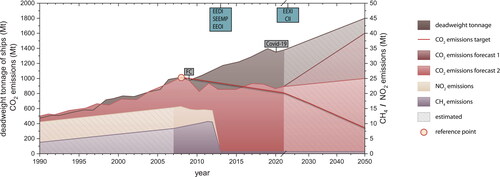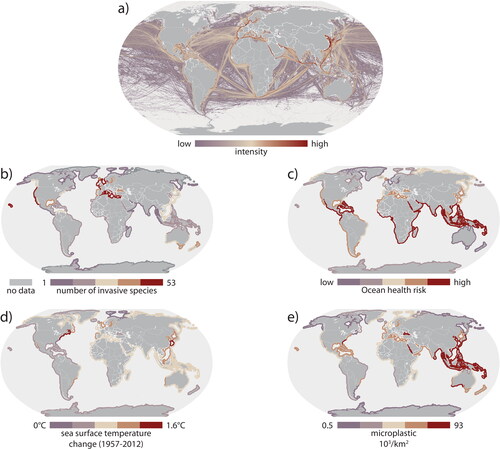Figures & data
Figure 1. Biofouling is a temporal and highly dynamic process starting with the adsorption of small organic molecules and microorganisms onto the surface. It is followed by the settlement of spores and larvae of higher organisms and plants exploring new habitats. Depending on various parameters, such as location, temperature, salinity, nutrients, and properties of the surface, a unique fouling layer develops.

Figure 2. Most applied coatings to prevent biofouling in the marine industry are antifouling (AF) and fouling release (FR) coatings. Besides AF and FR coatings, hard coatings are used specifically with external cleaning systems.

Table 1. Overview of the main commercial coatings systems of the market leading manufacturers available in 2023.
Table 2. In water hull cleaning systems using remotely operated vehicles (ROV).
Table 3. Biocides approved by the European BPR (exception diuron and zinc pyrithione which are in the approval process) and their toxicity (Amara et al. Citation2018).
Figure 3. Development and prediction of the global shipping industry and their GHG emissions. Since 2013, the IMO enforces regulations to gradually reduce the CO2 emissions as well as limit N2O and CH4 emissions compared to their reference point in 2008 (Chen et al. Citation2019). Predictive models based on pessimistic (1), and optimistic (2) scenarios forecast the development of GHG emissions up to 2050 (Bouman et al. Citation2017).

Figure 4. (a) Main shipping trade routes based on AIS data from 2015 to 2021 (Adam Symington Citation2023). (b) Number of alien invasive species reported in coastal areas in 2008 (Molnar et al. Citation2008). (c) health condition of the marine environment based on ten diverse socio-ecological indices (Halpern et al. Citation2012). (d) change in sea surface temperature between 1957 and 2012 (Belkin Citation2009). (e) amount of floating microplastics (particles < 4.75 mm) in coastal areas based on modelled data in 2012 (Lebreton et al. Citation2012). Images (b) to (e) were adapted from onesharedocean.org (Jay O’Reilly Citation2023).

